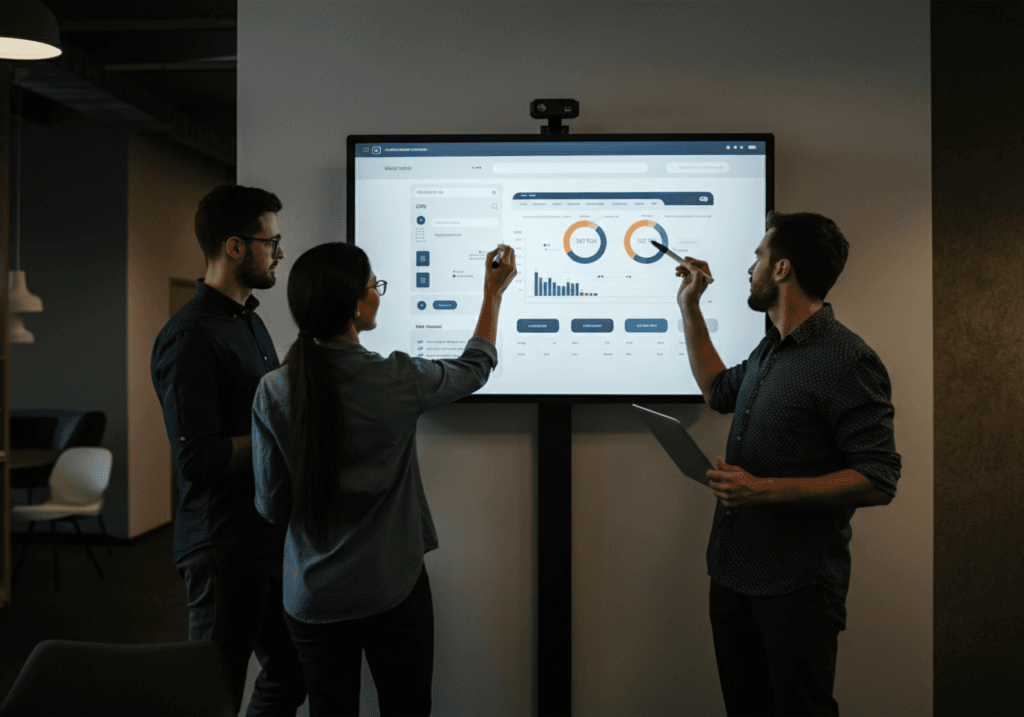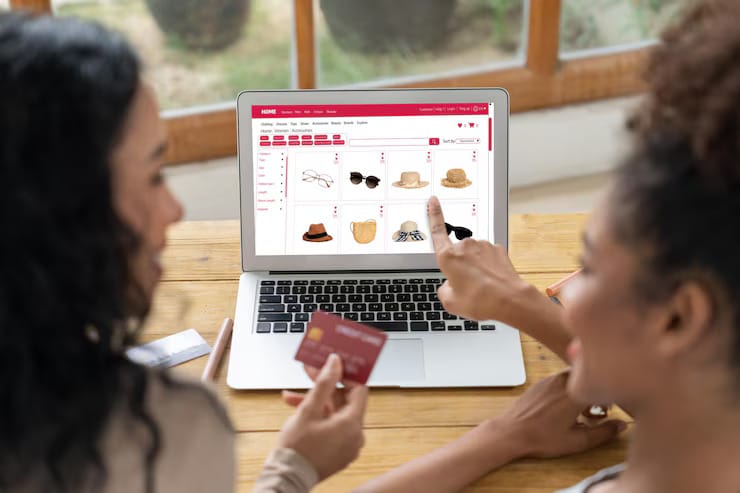What comes to mind when you hear Conversion Rate Optimization (CRO)? More users flooding in? Maximizing every dollar of your ad campaigns? Decoding how new visitors move through your site? A spike in sales?
Investing in CRO is also about working smarter, not harder, to turn potential customers into loyal buyers. When you channel your efforts into CRO, you’re not just hoping for more traffic—you’re unlocking the true potential of the visitors you already have. And the payoff? Massive.
According to Marketing Scoop, Companies that double down on structured CRO programs are seeing returns that can soar up to 1,000%! It’s a no-brainer
With this, businesses that prioritize CRO early enough can set themselves apart in competitive industries. Those who successfully integrate CRO can maintain lower bounce rates, increase user retention, and generate more value per visitor.
But before diving into the details, let’s first break down what CRO really means.
What is conversion rate optimization?
Conversion rate Optimization can be broken into three core elements
- Conversion: This is when a visitor completes a desired action on your site, like buying a product or signing up. It’s about getting visitors to “convert” into customers or leads.
- Rate: This is the percentage of visitors who complete that action. For example, if 100 people visit your site and 5 buy something, your conversion rate is 5%.
- Optimization: Optimization involves improving the website or app experience so more people take that action, boosting the conversion rate over time.
Simply put, CRO is the ongoing process of refining your site to encourage more visitors to take action.
Mastering these basics doesn’t just drive revenue and improve user experience; it also makes your approach smarter, more data-driven, and far more efficient. Now, let’s look at the primary elements that boost your conversion rate optimization strategy.
1. User experience design
Not to sound spooky, but think of your user experience (UX) as finding a comfy, well-deserved mental space in the minds of your users. It’s about curating the journey between your product or service and your customers. Your user experience isn’t just about looks, designs or aesthetics—it’s about creating a memorable journey for every visitor who interacts with your product or service.
The first step of UX when it comes to driving conversions is a seamless experience. Ask yourself: Is my site structure built for action? Nothing kills engagement faster than clunky navigation and chaotic layouts. Frustrated users bounce faster than a ping-pong ball.
Design their journey to be smooth and intuitive. Keep your navigation bar simple and direct—guide them to exactly where they need to go. If possible, stick to essential pages like “Home,” “Shop,” “About Us,” and “Contact”—no fluff. A concise menu keeps visitors from feeling lost and overwhelmed. Make it effortless to explore by grouping related items under clear, easy-to-find headings.
On mobile, simplicity and effectiveness is everything. Use a clean, scroll-friendly layout that’s easy to navigate on small screens. And speed? The fastest hack to victory. Compress images, enable caching, and cut down redirects to keep your pages loading fast. Your visitors will thank you.
2. Website content
Element B to driving conversions, is your website content. It’s a dynamic yet powerful engine in driving conversions. But before we dive into crafting an irresistible hook to grab users’ attention, it’s crucial to understand your buyer’s journey.
Imagine this: a visitor arrives at your site, lured by a compelling offer on your landing page, only to be disappointed when they get to your website because their expectations are not met. They click away, feeling let down.
That’s why your first point of action is to inspect your pipeline from start to finish.
Identify friction points and drop-offs that drive potential customers away. Only then can you optimize based on real insights. Once you’ve fixed those leaks, create content that addresses your audience’s needs, answers their burning questions, and clearly articulates your unique value proposition.
Show them you’re the expert they’ve been searching for. Use strong verbs and specific benefits, make every word count to ensure your message resonates and delivers unmatched value. Inspire them to engage, act, and transform their experience with you.
Featured read: Top 7 website analytics tools you can use for free
3. Call-to-action (CTA)
If your website content is the engine, CTAs are the heartbeat. There are the clear cut pathways users take on your website in doing the actions you desire. Statistics show that a well-crafted CTA can boost your conversions by an astounding 160%
Which means that your CTA is the igniter to prompting users to act without a moment’s hesitation. In crafting your CTA, showcase the benefits they’ll gain by clicking. Make it crystal clear what’s in it for them, reinforcing their motivation to convert.
Choose powerful, action-oriented phrases that speak to a sense of urgency prompting them to take action on time. The clarity of your CTA button ensures users know exactly what happens when they click.
Visually, your CTAs must command attention. Use contrasting colors, bold fonts, and eye-catching button shapes to make them pop. And don’t forget the important rule of thumb—test, test, test!
Regularly A/B test with different designs, text, and placements to discover what resonates best with your audience. Elevate your CTAs and watch the difference in your results!
4. Landing page optimization
Landing page optimization is all about using sharp strategies to elevate user experience, boost engagement, and skyrocket conversions. A top-notch landing page is clean, focused, and distraction-free and serves a dynamic purpose: keep users moving toward that “button”.
Start with a headline that speaks to a key need or pain point. A headline that hits home grabs attention instantly and drives readers to learn more.
Showcase what makes your offer unique and valuable. When users see what’s in it for them at first glance, they’re much more likely to convert. Bring visuals to life. From your colors to images, clear icons, or short videos . let it convey your product benefits.
Skip the heavy text blocks, it sometimes hurts the eyes—keep your descriptions short, snappy, and easy to skim.
Lastly, Create some sense of urgency.
A psychologist in his research study discovered that urgency and scarcity have a way of blocking the minds of users from thinking of anything else as this technique prompts humans to action speedily. How to do this is to use phrases that create a sense of urgency or better still, include countdown timers to highlight limited-time deals. Urgency taps into FOMO, driving users to act now instead of later.
5. A/B testing
For any successful product to see the light of day, it must go through systematic testing to know the efficacy of what and what doesn’t work. Different elements are usually tested to know what improves website conversions from headlines to images, CTA etc. Instead of relying on guesswork, A/B testing allows you to make data-driven decisions.
Regular testing of elements ensures that the landing page or website keeps improving and adapting to changing user preferences, driving long-term conversion gains. Choose one key element to start with—it could be the headline, CTA button color, CTA text, images, or form length.
Testing one element at a time gives clear insight into what specifically drives better results, helping you focus on the right changes.
Also, define the specific metric you’re looking to improve, like click-through rate (CTR), sign-up rate, or purchase completion. For example, for testing out a CTA, the goal might be to increase CTR by 10%.
For better efficiency, you can even decide to use an A/B testing tool (e.g GrowthApp) to automatically split traffic so that half the visitors see version A and the other half see version B. From the performance of both, you can decide to go with the one with better results.
Implementing a data-backed change improves conversions based on real user behavior rather than assumptions.
6. Data analysis
We live in a data-driven world, and your conversion strategy also depends on these deep insights. It’s more than numbers and charts; it’s the raw insight into your users’ minds, uncovering exactly what fuels their clicks, their purchases, and their loyalty.
Don’t leave conversions to chance. Pinpoint every critical move on your site—from sign-ups to the “Register Now” clicks. Each tracked action is a breadcrumb trail, leading you straight to the heart of what drives engagement.
Get granular. Divide users by attributes like age, location, or device type, and let them feel seen with personalized content. It’s not just about personalization; it’s precision targeting that makes every user feel you’ve crafted the experience just for them.
With a conversion funnel, visualize each stage from the product page, add-to-cart, checkout—and analyze where users drop off. Here’s where you uncover hidden barriers, the points that could make or break a sale.
With data as your guide, form powerful hypotheses. If a specific page has their attention, use retargeting ads to remind them what they left behind. Every insight, every tweak, and every test carves a path of least resistance, making it nearly impossible for users to say no.
Use GrowthApp to optimize all these elements
All these elements of cro will help you unlock the full potential of existing visitors and transform them into loyal customers by refining every aspect of their experience. Merging key elements like user experience (UX) design, website content, compelling calls-to-action (CTAs), landing page optimization, A/B testing, and data analysis play crucial roles in creating an effective CRO strategy.
Together, these elements create a streamlined conversion funnel that drives sustained growth, with each user interaction informed by data, enhanced through testing, and made memorable through design and content.
Ultimately, CRO is about making data-driven adjustments that not only increase conversions but also enhance user satisfaction. As you prioritize these elements of CRO, you’re building a strategy that works smarter, delivers measurable results, and provides a significant edge among competitors.


